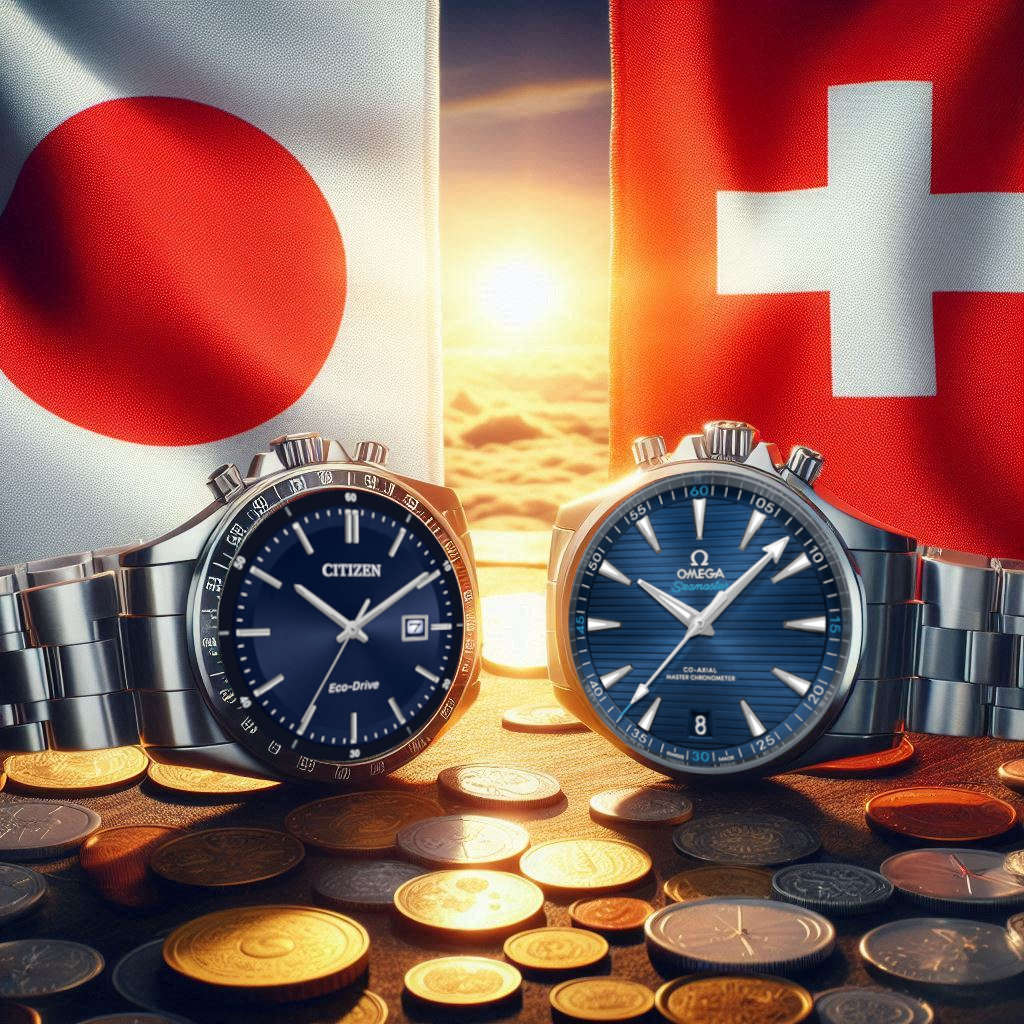A Brief History: How It All Started
Swiss Watchmaking: The Legacy
Switzerland became the heart of fine watchmaking as early as the 16th century. Brands like Patek Philippe, Rolex, and Omega have built a reputation on precision engineering, luxury materials, and timeless design. Swiss watches have long been considered a symbol of wealth and status.
Japanese Watchmaking: The Disruptor
Japan entered the watch scene later but made a massive impact in the 20th century. Seiko introduced the first quartz wristwatch in 1969, sparking the Quartz Revolution. Japanese brands like Seiko, Citizen, and Casio offered highly accurate, affordable alternatives — reshaping the global watch industry.
To explore how watchmaking evolved from its earliest days to the modern era, check out our complete history of watches.
Swiss vs. Japanese Watches: Technology & Craftsmanship
| Feature | Swiss Watches | Japanese Watches |
|---|---|---|
| Primary Focus | Mechanical excellence | Quartz accuracy and tech innovation |
| Materials Innovation | Anti-magnetic materials, ceramics | Solar power, titanium, GPS syncing |
| Typical Price Range | Mid to ultra-luxury | Affordable to mid-luxury |
| Movement Development | In-house calibers, Co-Axial escapement | Hybrid tech (e.g., Spring Drive) |
Winner: Swiss for traditional mechanical mastery, Japanese for technological breakthroughs.
Brand Showdown: Omega vs. Citizen
Let's directly compare two heavyweights from each side.
| Feature | Omega | Citizen |
|---|---|---|
| Founded | 1848 (Switzerland) | 1918 (Japan) |
| Movement Specialization | Mechanical (Co-Axial), METAS certified | Quartz, Eco-Drive (solar-powered) |
| Innovation Focus | Magnetic resistance, precision timing | Eco-Drive, atomic time synchronization |
| Average Price (2025) | $4,000 – $60,000+ | $150 – $2,500 |
| Brand Image | Prestige, luxury, space heritage | Innovation, sustainability, value |
Omega wins for luxury prestige.
Citizen wins for technological innovation and affordability.
Global Market Snapshot (2025)
Market Share by Region
| Region | Swiss Watches (%) | Japanese Watches (%) |
|---|---|---|
| North America | 60% | 40% |
| Europe | 75% | 25% |
| Asia | 45% | 55% |
| South America | 50% | 50% |
| Africa | 40% | 60% |
Global Sales (2024–2025)
- Swiss Exports: $25 billion (steady)
- Japanese Exports: $12 billion (up 8%)
Popularity Trends
- Swiss: Still leads in luxury and collectability.
- Japan: Winning among younger buyers, outdoor adventurers, and tech lovers.
Popularity by Region
| Region | Swiss Watches Popularity | Japanese Watches Popularity |
|---|---|---|
| North America | Very High | High |
| Europe | Very High | Moderate |
| Asia (excluding Japan) | Moderate | Very High |
| Middle East | High | Moderate |
| Latin America | Moderate | Growing |
Innovation Spotlight
- Omega: Anti-magnetic calibers like the Master Chronometer.
- Citizen: Eco-Drive watches that never need a battery change.
- Seiko: Spring Drive movement — mechanical beauty with quartz precision.
- TAG Heuer: Connected smartwatches blending Swiss luxury and tech.
Design & Aesthetics
- Swiss designs favor classic elegance, minimalist dials, and luxury finishes.
- Japanese brands offer more variety — rugged designs (G-Shock), elegant craftsmanship (Grand Seiko), and ultra-modern solar pieces (Citizen).
Swiss watches dominate traditional luxury aesthetics.
Japanese watches innovate in functional and hybrid designs.
Summary Table: Swiss vs. Japanese Watches
| Aspect | Winner |
|---|---|
| Mechanical Craftsmanship | Switzerland |
| Quartz Technology | Japan |
| Innovation and Features | Japan |
| Design Prestige | Switzerland |
| Price-to-Performance | Japan |
| Luxury Market Share | Switzerland |
| Growth Potential | Japan |
Final Verdict: Who’s Winning in 2025?
Both Swiss and Japanese watchmakers continue to thrive, but in different arenas.
- Choose Swiss if you seek prestige, luxury craftsmanship, and timeless design.
- Choose Japanese if you value innovation, everyday practicality, and cutting-edge technology.
In 2025, the smart choice isn’t one over the other — it’s recognizing the strength each side brings to your wrist.
The ongoing debate between Japanese and Swiss watches centers on craftsmanship, technology, and value. Swiss watches are renowned for their traditional mechanical expertise and luxury appeal, while Japanese brands are celebrated for innovation and affordability. For insights into why luxury watches remain a smart investment, see Why Luxury Watches Are Still a Smart Investment in 2025 | Expert Guide.
Understanding the underlying watch mechanisms is crucial to appreciating the strengths of both Japanese and Swiss manufacturers. Dive deeper into the technical differences in our comprehensive guide on Watch Mechanism Types: A Comprehensive Guide.
